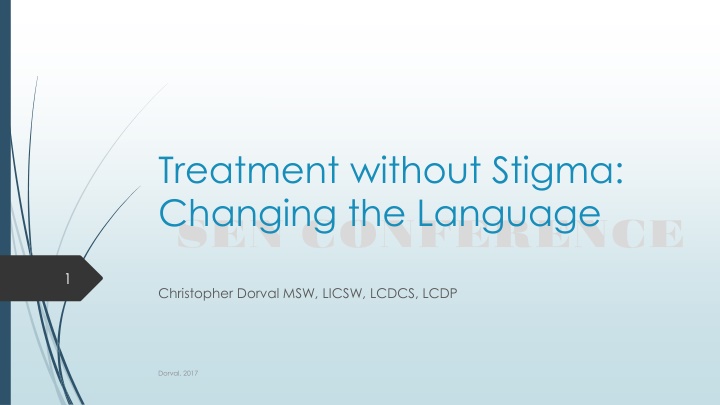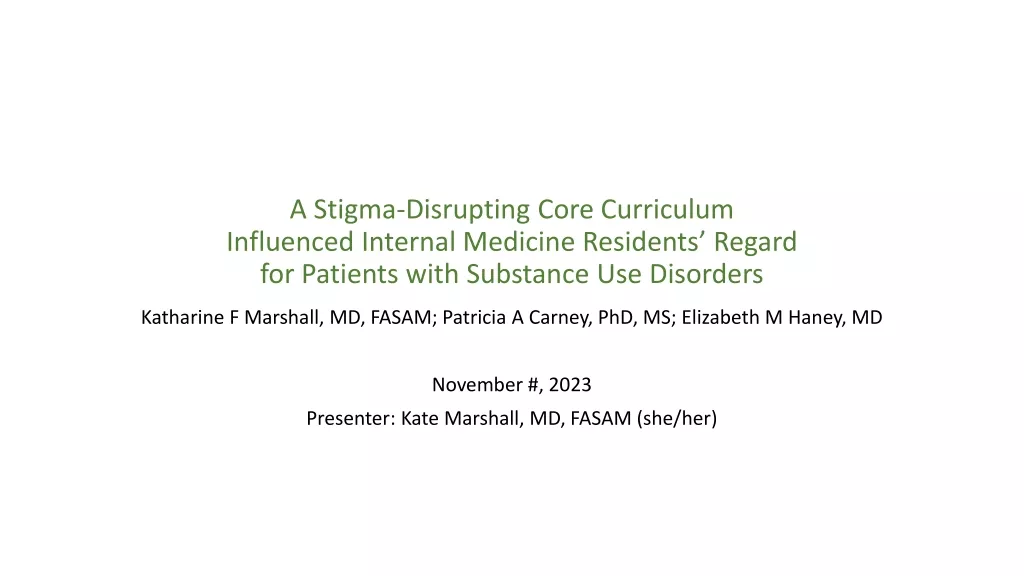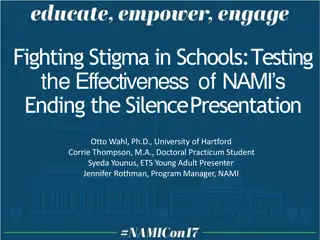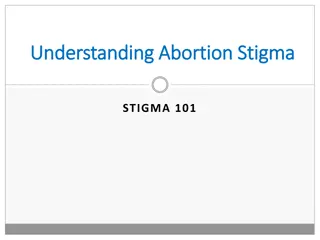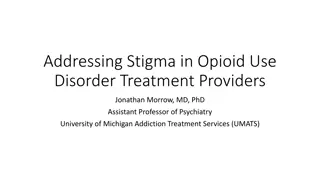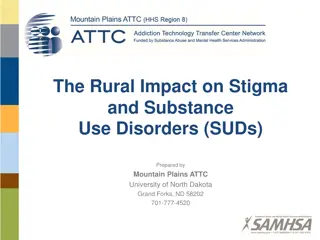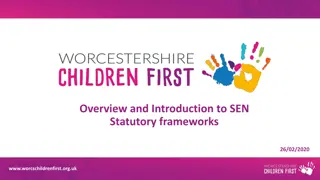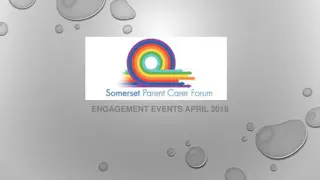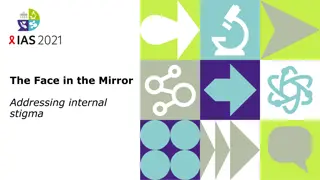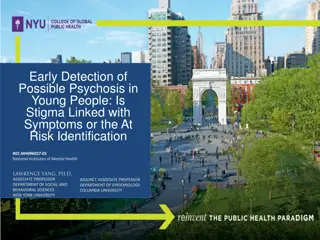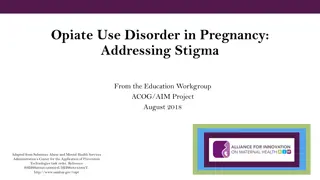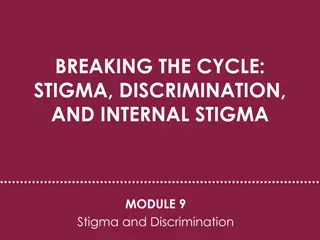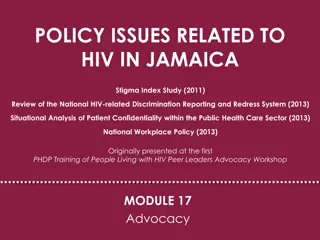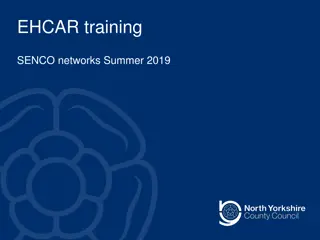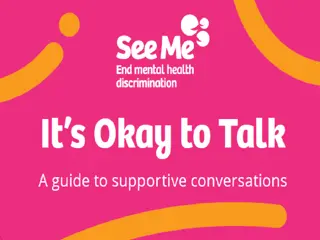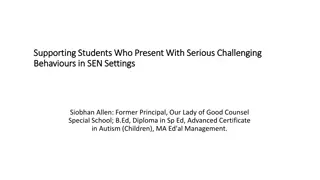Treatment Without Stigma: Changing the Language in a SEN Conference
The presentation focuses on reducing stigma associated with substance use disorders by using strengths-based language. It covers factors influencing stigma, interventions to address it, and the dimensions supporting life in recovery. Stigma is explored along with the concept of recovery from mental and substance use disorders, emphasizing health, home, purpose, and community.
Download Presentation

Please find below an Image/Link to download the presentation.
The content on the website is provided AS IS for your information and personal use only. It may not be sold, licensed, or shared on other websites without obtaining consent from the author.If you encounter any issues during the download, it is possible that the publisher has removed the file from their server.
You are allowed to download the files provided on this website for personal or commercial use, subject to the condition that they are used lawfully. All files are the property of their respective owners.
The content on the website is provided AS IS for your information and personal use only. It may not be sold, licensed, or shared on other websites without obtaining consent from the author.
E N D
Presentation Transcript
Treatment without Stigma: Changing the Language SEN CONFERENCE 1 Christopher Dorval MSW, LICSW, LCDCS, LCDP Dorval, 2017
Disclosure Statement The presenter DOES NOT have an interest in selling a technology, program, product, and/or service to CME/CE professionals.
Learning Objectives: Participants will: 1. Be able to identify use strengths based language to reduce stigma associated with substance use disorders. 2. Be able to conceptualize the factors that influence stigma associated with substance use disorders and their consequences. 3. Be able to discuss targets and interventions aimed at addressing stigma associated with substance use.
What is Stigma 4 Stigma- the complex of attitudes, beliefs, behaviors, and structures that interact at different levels of society (i.e., individuals, groups, organizations, systems) and manifest in prejudicial attitudes about and discriminatory practices against people Dorval, 2017
5 What is Recovery? Recovery from Mental Disorders and/or Substance Use Disorders: A process of change through which individuals improve their health and wellness, live a self-directed life, and strive to reach their full potential. (SAMHSA, 2011) Dorval, 2017
Four Dimensions of Recovery 6 SAMHSA has delineated four major dimensions that support a life in recovery: 1. Health 2. Home 3. Purpose 4. Community Dorval, 2017
Four Major Dimensions of Life in Recovery Health: Overcoming or managing one's disease(s) as well as living in a physically and emotionally healthy way; Home: A stable and safe place to live; Purpose: Meaningful daily activities, such as a job, school, volunteerism, family caretaking, or creative endeavors, and the independence, income, and resources to participate in society; Community: Relationships and social networks that provide support, friendship, love, and hope.
The Backbone of Stigma 8 1. Issues of trust in intimate settings such as the family 2. Potential contact with a vulnerable group such as children 3. Potential for self-harm 4. Mental illness being antithetical to power or authority 5. Uneasiness about how to interact with people with mental illness/substance use (Pescosolido et al., 2013). Dorval, 2017
Factors that Influence Stigma and Consequences 9 Blame People with substance use disorders are generally considered to be more responsible for their conditions than people with depression, schizophrenia, or other psychiatric disorders (Crisp et al., 2000, 2005; Lloyd, 2013; Schomerus et al., 2011). Belief that a substance misuser's illness is a result of the person's own behavior can also influence attitudes about the value and appropriateness of publicly funded alcohol and drug treatment and services (Olsen et al., 2003). Dorval, 2017
Language of Stigma 10 Recovery Oriented In recovery Stigma Clean Person in recovery Addict/Alcoholic Recovery Maintenance Relapse Prevention Substance Use Substance Abuse/Dependence Positive/Negative Screen Dirty/Clean Screen/Urine Substance Illegal Drugs Sick/ill Crazy Person first Diagnosis first Dorval, 2017
Public Attitude Towards Treatment 11 Substance Abuse and Mental Health Services Administration (2014) Inability to afford the cost of care (48%), Believing that the problems could be handled without treatment (26.5%), Not knowing where to go for services (25%), Inadequate or no coverage of mental health treatment (6% to 9%), Thinking that treatment would not help (9%) Concerns about confidentiality (10%), Fear that it might cause neighbors or the community to have a negative opinion (10%), Fear that it might cause a negative effect on a person's job (8%), Fear of being committed (10%), Dorval, 2017
Internalized Stigma in the Recovery Community 12 Dorval, 2017
Anonymity in Recovery 13 Anonymity is the spiritual foundation of all our traditions ever reminding us to place PRINCIPLES BEFORE PERSONALITIES. (Twelve Steps Twelve Traditions, 1981 pp. 184) Dorval, 2017
14 What the Book says What they say They say, You re not sober if you re taking pain meds or psych meds. Big Book says, We are convinced that a spiritual mode of living is a most powerful health restorative. But this does not mean that we disregard human health measures. though God has wrought miracles among us, we should never belittle a good doctor or psychiatrist. Their services are indispensable in treating a newcomer and in following his case afterward. [Alcoholics Anonymous, 4th Edition, p. 133] Dorval, 2017
Organizational Interventions to Address Stigma 15 Improving engagement strategies (families, employers, HCP s) Integrated care increases participation Increased contact between HCP and patients with SUD. Peer support services Recovery Oriented Language Patient's as decision makers in agency/organizational decisions Use of media for mass messaging to dispel myths regarding behavioral health disorders and treatment, Education to counter the lack of knowledge about disorders and treatment Dorval, 2017
